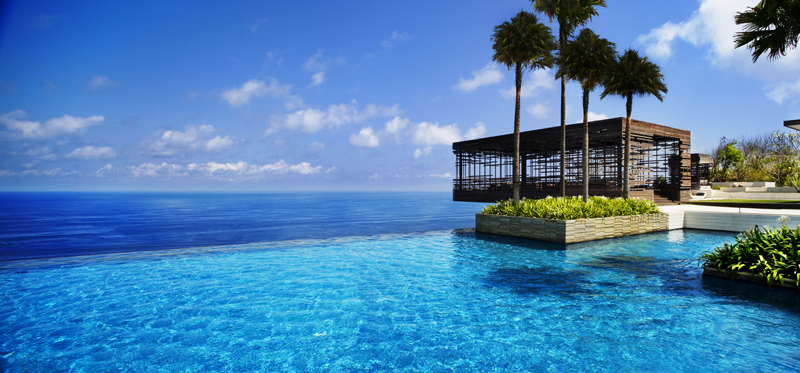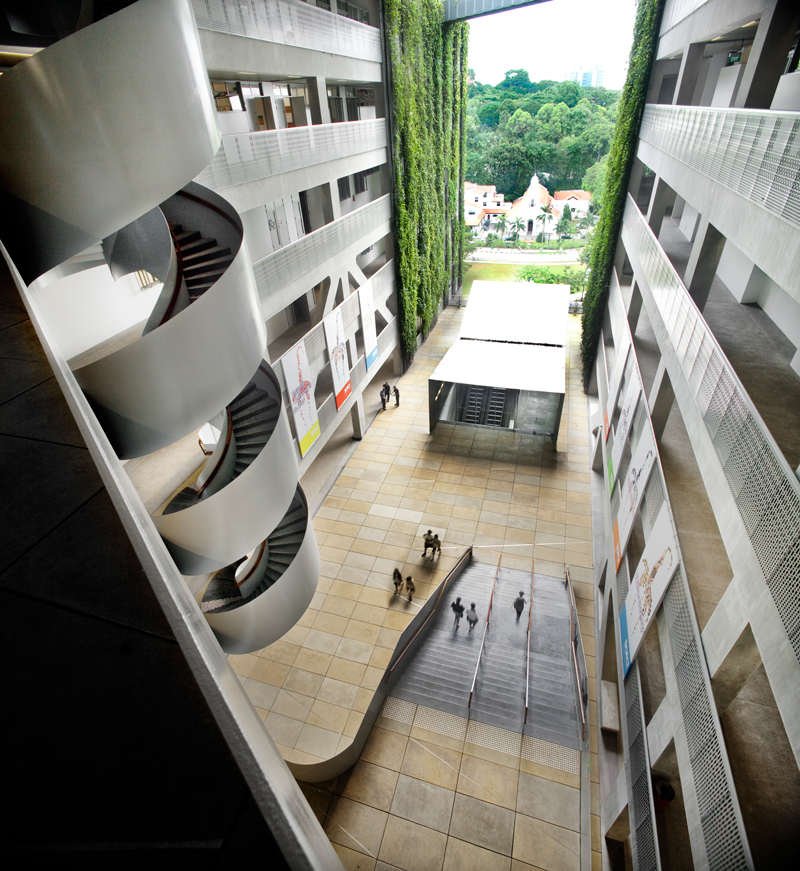What is biophilia? To me, it’s a love and respect for nature. Biophilic design then, is showing that love and respect by preserving and harnessing nature – and working with it.
Humans have always lived within nature, but in the developed world buildings and cities have gradually created a barrier between us and the great outdoors. Biophilic design aims to break down that barrier and reverse the trend by seamlessly connecting indoor and outdoor spaces.
As an architect, this means asking questions that put our relationship with the environment first: How can we build sustainably? How can we encourage diverse natural environments? How can we give back to nature? How can we use the natural environment to enhance our lives without destroying it?
At WOHA, along with my partner Wong Mun Summ, we aim to find the answers to these questions with every project we undertake.
Giving back to nature
We can’t escape the fact that construction has a detrimental effect on nature, but we can do everything in our power to limit that impact, and in some cases even create buildings that could generate a profit for nature.
Almost every building project increases the available surface area. By deliberately maximising space for rooftop gardens and green walls we can create a building with more green space than the original site – or even reintroduce green spaces to built-up areas.
For the Parkroyal on Pickering Hotel in Singapore, we introduced 15,000 square meters of green space – which is double the area of the original site and equal in size to the neighbouring Hong Lim Park. Amazingly, local birds, butterflies, insects and bees now inhabit the hotel’s skygardens, pools and waterfalls.
A basic human need
Reducing the drain on natural resources is an element of biophilic design, but it goes beyond eco-friendly design and sustainability. Architects can create ecologically sustainable buildings without actively making human lives better.
People are happiest when they can see the horizon, greenery, water, feel a cool breeze, hear the trickle of water or the sounds of nature. If you want a sick, depressed, angry, inefficient workforce, then the best way to do that is to put them in windowless artificial environments with stale air, grey walls, and the low hum of technology. Biophilic design aims to go a step further by reuniting humans with nature and improving our wellbeing.
We have more to lose, and more to gain
In tropical Singapore, and most of Asia, these theories are even more pertinent. The tropics are an ecologically diverse region, so in a way, we have more animals and plants to lose. Building a megacity in the desert has a terrible environmental impact, but at least the damage to plant life is comparatively low. Here, we have incredibly rich primary rainforests and mangroves to preserve.
We can help to minimise our impact by designing around vegetation, keeping trees and native plants in their original position or replanting them on site, and making use of locally sourced materials. For Alila Villas Uluwatu, a project completed in 2009 in Bali, we made full use of local recycled timber.

Alila Villas Uluwatu, Bali Indonesia; photo by Patrick Bingham-Hall
The weather also has a big part to play: sunshine, heat, humidity, and the monsoon rain. Life in the tropics is a constant battle to stay cool, so people are naturally drawn to enclosed, air-conditioned spaces. Life for many revolves around shopping centres in this part of the world, and a modern life can often mean moving from air-conditioned home, to train, to work, to shopping centre, to home again, without ever really being outdoors.
We work long hours in high-stress environments, and our cities often have a space problem, with many working in small windowless offices. Biophilic design looks to interrupt this harmful modern Asian lifestyle by bringing nature indoors, directing people outdoors whenever possible, and harnessing natural resources to make outdoor spaces more liveable.
When planning the School of the Arts in Singapore, we wanted to harness Singapore’s light breezes so that students could spend more time outside. Our design successfully does this, maximising airflow between blocks and gives students space to relax in shaded areas.

School of the Arts, Singapore; photo by Patrick Bingham-Hall
Biophilic design in Asia
Singapore is Asia’s only biophilic city. Discounting Monaco, Singapore is the most population-dense country in the world, but it is the greenest city in Asia and consistently appears in top 10 global greenest city lists (both for being eco-friendly, and for its green open spaces). This is not accidental. The original city planners made an early decision to preserve as much of Singapore’s green space as possible, and have planted over two million trees since the 1960s. Even early high-rise social housing projects were designed with green spaces and wind in mind, and today the government continues to make parks and greenery a priority.
These pioneering decisions have allowed Singapore to become the leading Asian city for biophilic design today. Our work at WOHA can be seen as a continuation of this, further blurring the lines between interior and exterior spaces.
Embracing biophilia
Governments are beginning to commission projects in South Korea, Japan, India and throughout the region, and we have seen with our work outside of Singapore that biophilic ideas are gaining traction with apartment towers, luxury resorts, mass-transit stations, condominiums, hotels, educational institutions, and public buildings in Indonesia, China, Thailand and Australia.
By embracing biophilic design we have built up quite a collection of awards for a Southeast Asian practice. In 2007 we took were awarded the Aga Khan Award for Architecture for 1 Moulmein Rise, and collected four awards in the RIBA International Awards of 2011 and 2010 for Alila Villas Uluwatu, School of the Arts, The Met and Bras Basah MRT Station. We also won the 2011 RIBA Lubetkin Prize and the 2010 International Highrise Award, both for The Met, along with two titles in two consecutive years at the World Architecture Festival in 2009 and 2010.
However, we still have a long way to go when the vast majority of new projects pay very little attention to nature – which is especially true for office space. Transport hubs, parks, condominiums and hotels are an excellent start, but the workplace is where biophilic design can have the greatest impact. Not just for wellbeing, but for the bottom line. Happy and healthy employees work more efficiently, take fewer sick leave days, and are more creative.
We need to help businesses and developers think differently about how they choose and plan office space. Instead of looking at a building and calculating how many desks can fit in an open plan office (and how much profit each person can generate without a thought for productivity), we need to show them how quality of environment is directly proportional to profit. This can also have a profound effect on the image that a company projects, both to people that visit the office, and when dealing with happy and healthy employees.